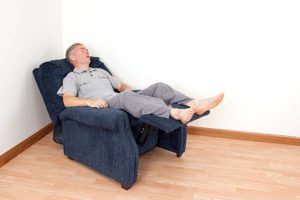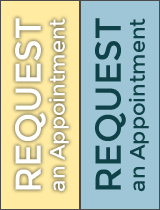Can Sleeping in a Recliner Help with Sleep Apnea?
May 2, 2023
 If you suffer from sleep apnea, snoring isn’t the only concern. With no treatment, it can lead to serious health issues, with potentially deadly complications. Not to mention, your quality of life and mental health can decline from insufficient sleep. Could sleeping in a recliner be the solution you need? Although it can improve your sleep apnea, it’s not an alternative to a CPAP or an oral appliance. Here’s how changing your sleeping position can improve your wellness when combined with sleep apnea therapy.
If you suffer from sleep apnea, snoring isn’t the only concern. With no treatment, it can lead to serious health issues, with potentially deadly complications. Not to mention, your quality of life and mental health can decline from insufficient sleep. Could sleeping in a recliner be the solution you need? Although it can improve your sleep apnea, it’s not an alternative to a CPAP or an oral appliance. Here’s how changing your sleeping position can improve your wellness when combined with sleep apnea therapy.
What is Sleep Apnea?
Obstructive sleep apnea (OSA) is the most common form of the breathing disorder. When the soft tissues in the back of the mouth and throat relax as you drift off to sleep, they can obstruct the upper airway. Not only can this result in loud, chronic snoring, but it can also cause you to stop breathing hundreds of times per night.
Each breathing disruption interrupts your sleep cycle and depletes your body of oxygen. You can develop many complications with no treatment, like heart disease, sleep deprivation, and memory loss.
Your Sleep Position Matters
Many factors contribute to pauses in breathing, like your sleep position. Laying flat on your back is known to increase the risk of snoring and airway obstructions. Sleeping in a recliner can help you breathe better.
A 2017 study found that sleeping at a 7.5-degree elevation can improve sleep apnea symptoms. Older studies have found that sleeping at 30 to 60 degrees is also beneficial, which is about the same angle as a recliner. If you prefer to lie in bed, sleep on your side or elevate your pillows when sleeping on your back.
Options to Treat Sleep Apnea
Besides changing your sleeping position, visit your sleep specialist for treatment. You have more options than ever to treat obstructive sleep apnea, including:
- CPAP: A CPAP machine is the most traditional treatment for sleep apnea. It delivers a gentle stream of pressurized air through a mask worn over the mouth or nose to prevent breathing disruptions.
- Oral Appliance: An oral appliance is a great solution for patients with mild-to-moderate cases of obstructive sleep apnea. The custom-fit design device holds your tongue and jaw in a better position to keep the airway open. It can be used alone or along with a CPAP to treat OSA.
Don’t spend another night putting your health at risk. Contact your dentist for a personalized treatment plan to keep your airway open, so you can sleep soundly.
About Dr. Deborah Romack
Dr. Romack achieved her dental degree at the Baylor College of Dentistry and has pursued advanced education in various specialties, like sleep dentistry and TMJ therapy. She has the experience and qualifications to treat obstructive sleep apnea. She uses the latest technologies to create customized oral appliances for snoring and OSA. Call our office at (817) 646-3084 to schedule a consultation.
No Comments
No comments yet.
RSS feed for comments on this post.
Sorry, the comment form is closed at this time.

